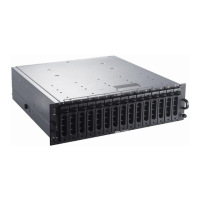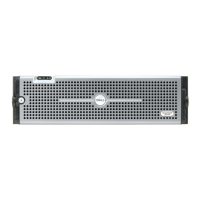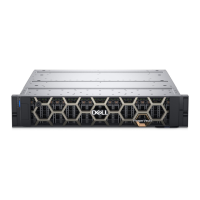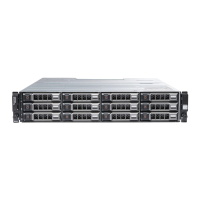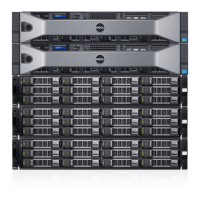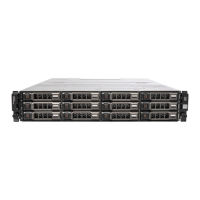PowerVault (Dell MD1400) Setup Guide
./NwArrayConfig.py --drives <N>
For RSA NetWitness Platform versions 11.1.0.2 and later, run the following command:
OWB_ALLOW_NON_FIPS=1 ./NwArrayConfig.py --drives <N>
where <N> is the number of drives to be assigned to the Concentrator service. By default <N>
is 3. If this is a Log Decoder Hybrid for logs, RSA recommends using a value of 7 to more
efficiently allocate the storage between the two services.
[root@P<hostname> saTools]#
This script discovers all available PowerVaults; creates all the necessary virtual drives,
logical volumes, and the directory structure; and writes the debug messages to
/opt/rsa/saTools/arrayCfg.log.
6. Verify the results:
a. Ensure that the script did not produce any errors by viewing the
/opt/rsa/saTools/arrayCfg.log file:
more /opt/rsa/saTools/arrayCfg.log
b. Run the following command to verify the new sizes of the databases:
df -hP | grep 'decoder\|concentrator\|Filesystem'
The following is an example of the results that are displayed for a Hybrid Network
Decoder:
c. Ensure that there is an entry for the added PowerVault. An individual packetdb0,
metadb0, and sessiondb0 is created for the added PowerVault. Verify that the size
listed for /var/netwitness/decoder/packetdb0 is what you would expect with the
extended storage arrays attached. Write this value down so that you can verify it in the
NetWitness Platform Interface.
d. Log in to RSA NetWitness Platform and go to Administration > Services or ADMIN >
Services.
The Administration Services view is displayed.
27 Install PowerVault without Encryption

